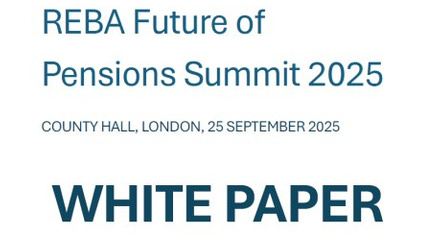How to design an inclusive financial wellbeing strategy that supports all of your workforce

Both employers and employees can see this as a personal issue – something for employees to sort out on their own. But while financial worries have a huge impact on an individual, there is an impact on their productivity at work – your business’s bottom line.
This isn’t just an issue for low-earning employees; 11 million workers in the UK have less than £1,000 in savings. Our DNA of Financial Wellbeing 2019/20 research found that while two-thirds of people who earn less than £10,000 are worried about money, so are around half of people who earn more than £70,000. If you can help employees reduce the stress they’re feeling about finances, they are going to have more time present and effective at work.
It’s important to note that what employees need will differ – whether that’s support with getting out from debt, guidance on buying a first home or saving for a big holiday. A lot of what you’re already doing might be supporting financial wellbeing – providing pensions, season ticket loans or childcare vouchers. Many of the benefits you have listed under other wellbeing areas – for example cycle to work, can also have positive financial effects. But if you’re not looking at your whole workforce and their needs, then you can’t design an inclusive financial wellbeing strategy that will hit the mark for everyone. Different segments within your employees will have different requirements – whether that’s by age, gender, life goals or level of financial education.
So how do you make sure your financial wellbeing strategy is inclusive of your entire workforce?
- Do your research first
- Cater to differing needs
- Champion and communicate what’s on offer
- Keep it ongoing
Building a plan: do your research
In order to understand what to implement to support your employees, you need to really understand their financial needs. You can do this by using multiple pieces of data that your HR system may already be capturing: the prevalence of stress-related incidents, finance-related employee assistance programme calls, pay advances, opt-out rates from pension contributions – essentially any data you can get your hands on to what your employees are thinking about in terms of their finances. You can also partner with providers who will run surveys for you to understand the financial health ‘score’ of your employees – do they need more help with understanding debt management, with building financial resilience or with saving for future goals?
By quantifying the level of financial worry in your business, you can make a business case in terms of money lost, both in days absent and reduced productivity, showing why it’s important to tackle.
Cater to the needs of all (or most)
Different groups need different types of support, so your financial wellbeing strategy has to provide for all – not by giving something generic that doesn’t really support anyone, but by providing personalised support to each employee. This could be in the form of education, or through products and services. Digital offerings can be great at ensuring each employee has the ability to get educated on the financial topics that are most important to them. However, it’s important to look at both sides. Education alone can’t help if employees can’t access the right products and services. Equally, providing employees with a product or service that isn’t well understood isn’t a great solution either.
Commit to championing the cause
A trap that employers can fall into is providing great benefits without ensuring that every employee knows about them. Our research has consistently shown that employers think they’re doing a better job at providing benefits than employees do. There’s no point signing up new providers if you’re not committed to championing the cause – through whatever communication channel is most effective for your employees. Whether that’s email, letters home, posters in the breakroom, manager packs, senior leader champions or the company intranet, do what it takes to ensure that each employee understands what you are offering them.
Companies that have a senior leadership and HR team that is committed to communicating about their financial wellbeing benefits, are more likely to see a greater uptake and therefore a greater impact on business productivity.
It has to be ongoing
Financial wellbeing isn’t a case of running one workshop and being done. It’s an ongoing process as your employees’ finances change over time and as they go through different life milestones. Build a programme that provides ongoing support for the lifetime goals of employees – understanding that they will move through different life stages at different times. This again shows the importance of committing to the cause; if you are communicating about this benefit on a regular basis, you will continue to engage employees at different life stages as finances become more or less important to them.
Tackling financial worries will help to improve workplace productivity and reduce absenteeism, as well as having a positive impact on employees themselves. By ensuring that the financial wellbeing strategy you build is able to cover a variety of needs across different life stages, you’re increasing your chances of success.
For more information about building a successful financial wellbeing strategy, check out our webinar with Martel Neville, senior manager of international benefits at ComCast NBCUniversal.
This article is provided by Neyber.
Neyber is sponsoring REBA’s Innovation Day 2019. Join us on 28 November in central London to future-proof your reward and benefits strategy.






